Relative of Famous Celebrity is First Person to Reach the North Pole
In the Arctic, a group of explorers persevered through impossible conditions to reach their destination after weeks through a blinding white landscape and biting cold. They become the first humans ever to reach the North Pole.
Over a century later, a descendant of one of those explorers gained recognition on her own merits—not in exploration, but in a completely different field, reaching the heights of celebrity. This is their story.
Voyage To The Icy Unknowns
In March 1909, explorers Matthew Henson and Robert Peary embarked on a mission to conquer the most treacherous parts of the world—the Arctic—intending to go down in history as one of the greatest adventurers of his time.
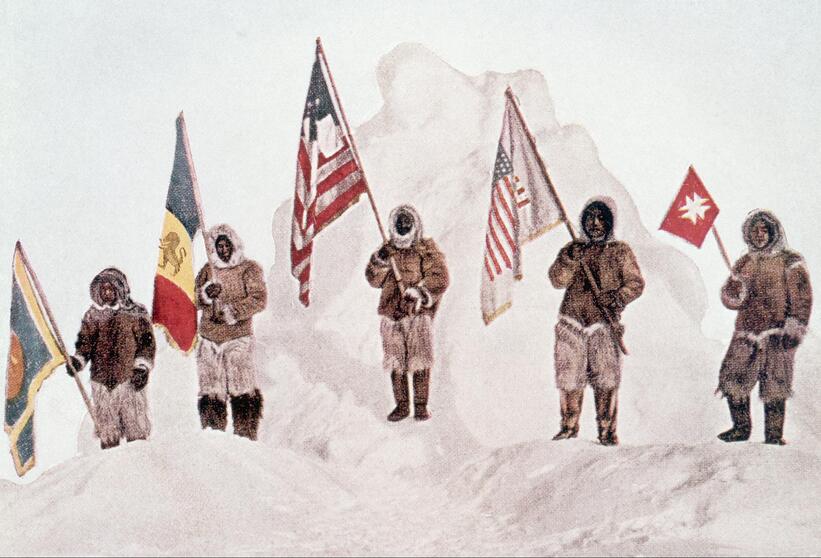
Source: Bettmann/Getty Images
Despite their accomplishment, their success was marred by a controversy that has continued to this day. The main point of contention is whether they both reached the North Pole, as the events that occurred on the ice that caused a rift between the two great friends still remain unclear.
A Historical Superstar
The words “Arctic expedition” are almost synonymous with “Robert Peary.” His name is seeded into monuments, ships, and mountains. However, because of the color of his skin, Matthew Henson’s great contributions to the legendary expedition have largely gone unsung—until recently.
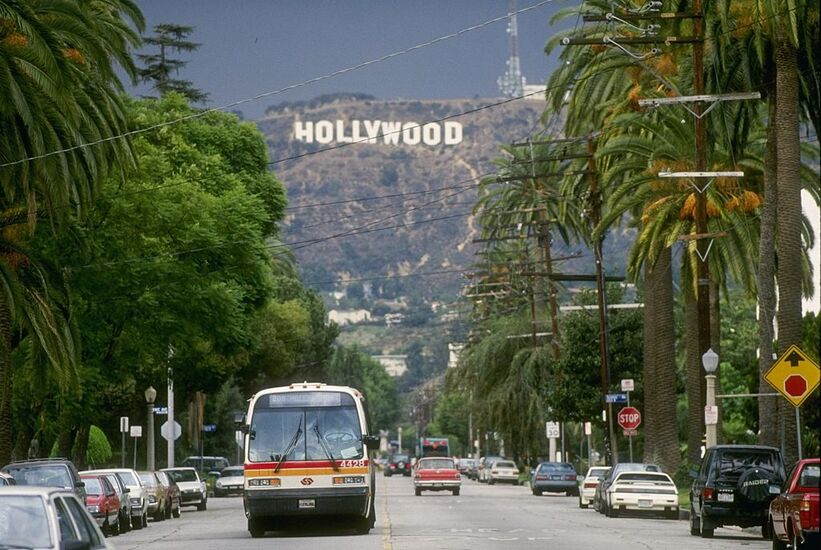
Source: Ken Levine/Getty Images
While Henson saw recognition in his lifetime, it paled compared to the fame Peary enjoyed. However, today a new kind of fame has gathered around the Henson family tree in a place that couldn’t be any more different than the frozen desert of the arctic—Hollywood, California.
The Story Of One Matthew Henson
Matthew Henson was born on a farm to a family of free people of color on a farm in Maryland. He lost his mother and father at a young age and was sent to live with his uncle. When he was ten years old, he heard Frederick Douglass speak at a ceremony honoring Abraham Lincoln.
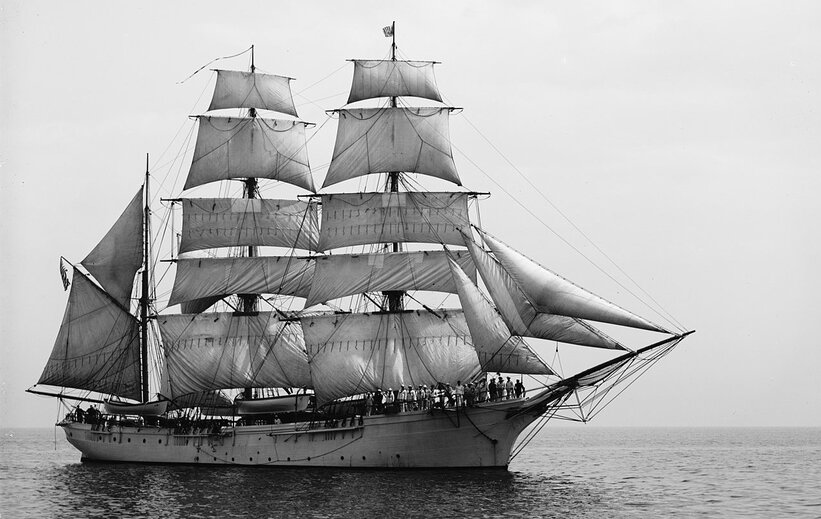
Source: Library of Congress/Wikimedia Commons
Inspired by his call to pursue education and combat prejudice, Henson began yearning to explore and experience more of the world. He took a job as a cabin boy on a ship named Katie Hines.
Back To The Capital
Henson soon impressed the merchant ship’s captain, Captain Childs, and under his tutelage, he learned to read and write. At only 12 years old, he saw more of the world than most people of his time—Russia, Japan, North Africa, and China—before returning to America upon the captain’s passing.
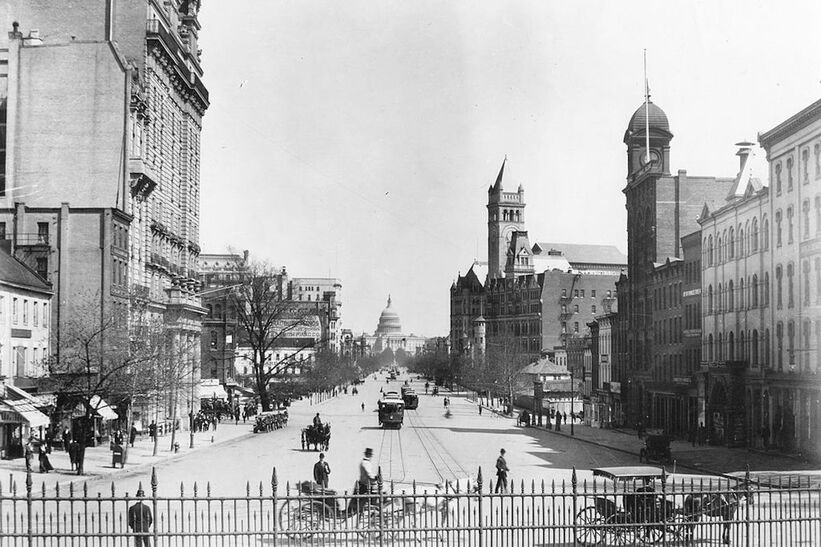
Source: PhotoQuest/Getty Images
He took a job as a clothing store clerk in Washington, D.C., to put food on the table and a roof over his head. While working at the store, he met a man with similar ambitions for travel and exploration.
Connecting The Pacific And Atlantic
In 1887, the United States government aimed to establish a trade route through Central America connecting the Pacific and Atlantic Oceans. The Panama Canal was still several years in the making, and at the time, planners suggested using Nicaragua as the most suitable location.
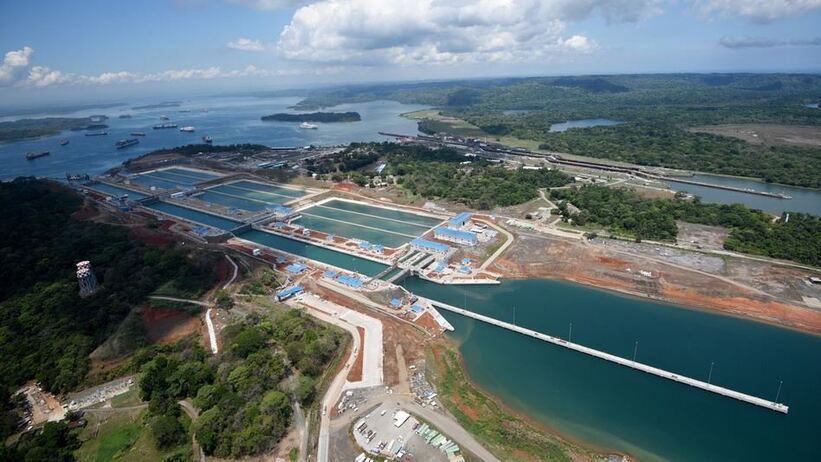
Source: Alamy
To prepare for this project, naval officer Robert Peary was ordered to go south, lay the necessary foundations, and oversee the planning. While in Central America, Peary would gain a reputation as a skilled explorer and adventurer.
Heading Out The The Jungles Of Central America
Peary had a few errands to run in preparation for his trip to Nicaragua. He stepped into B.H. Stinemetz and Sons, the clothing store where Henson was working. He overheard a conversation he was having about his seafaring exploits with one of his colleagues.
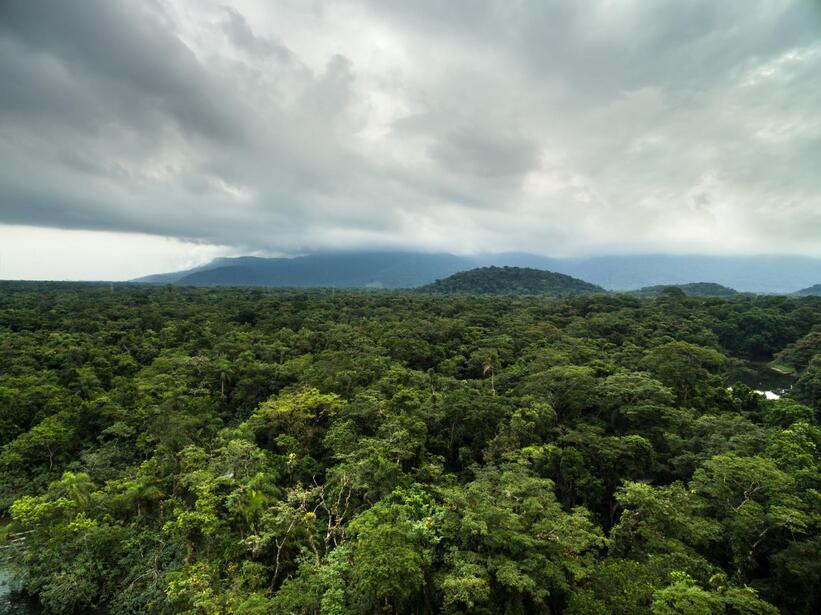
Source: Ildo Frazao/Getty Images
Impressed with his knowledge and passion for adventure and exploration, Peary attempted to recruit Henson on the spot as an assistant on his Nicaragua venture. Henson gladly accepted. Soon after, they headed south, down to Central America.
From The Heat To The Extreme Cold
Henson and Peary worked extremely well together on their survey outing. Their combined expertise allowed them to flourish in the jungles of Nicaragua. While they formed their bond in the sweltering heat of the Nicaraguan wilds, their fate lay in faraway lands of unbearable cold.
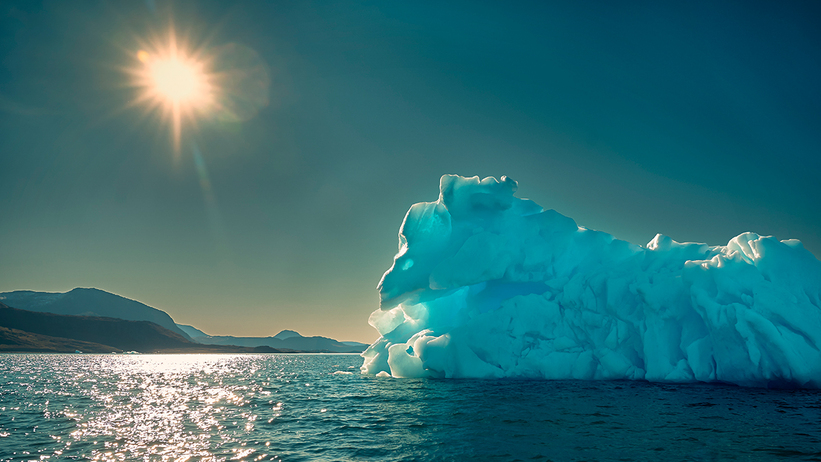
Source: Arctic-Images/Getty Images
They held the glory of Arctic explorations in their minds like a jewel. Discussions about the great voyage soon became a reality as Henson and Peary began mapping their journey to the uttermost north, where history awaited.
Mapping Greenland
During their early expeditions to the Arctic, Henson and Peary explored Greenland. They accomplished much—greatest of all by being the first to map the ice cap fully. In the 1890s, they transported a large number of meteorites from the Arctic to the United States.
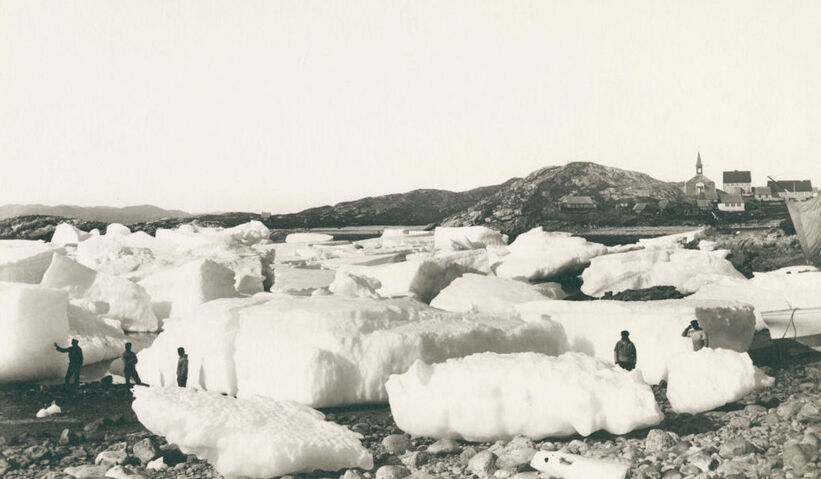
Source: Geography Photos/Universal Images Group via Getty Images
The money they made selling meteorites helped fund future expeditions. In addition, their explorations and scientific discoveries played a significant role in advancing the scientific understanding of the Arctic region and contributed to the eventual historic journey to the pole.
Pushing Further North
Henson and Peary spent the next 20 years on expeditions into the arctic, pushing further and further north. During this time, Henson began picking up the Innuit language and learning how to survive the way the locals did, including mastering dog sled driving.
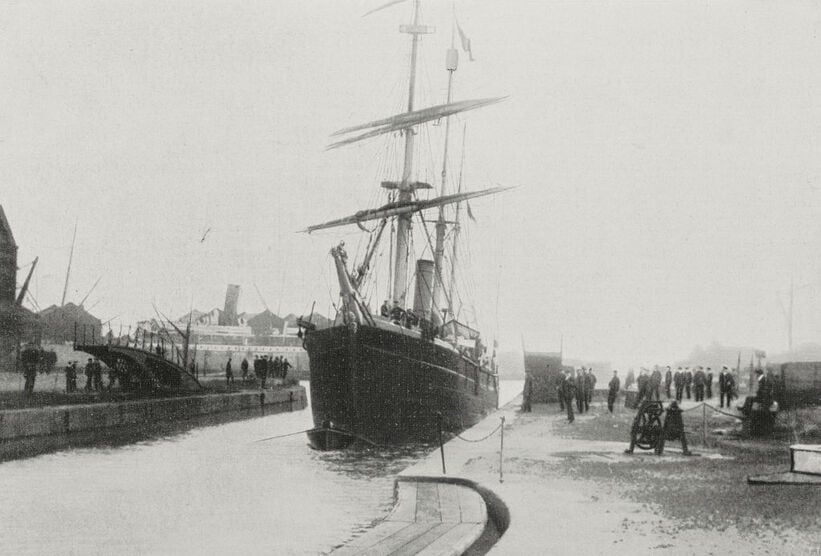
Source: DEA/BIBLIOTECA AMBROSIANA/Getty Images
Peary dreamed of making it to the North Pole and attempted it with Henson several times. They almost made it on board a custom-made icebreaker ship called the SS Roosevelt, coming within 200 miles. Three years later, they set off on their eighth attempt, determined to make it.
Putting The Team Together
Henson and Peary and a crew of 20 others departed from New York on July 6, 1908. Their journey included a stop in Greenland, where they recruited several Inuit explorers to their team. From there, they set sail for Ellesmere Island, located off the Canadian coast.
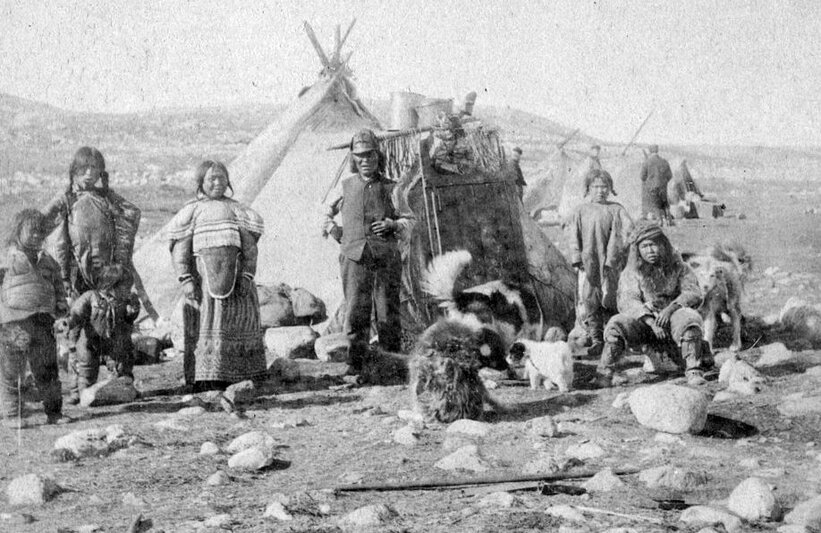
Source: The Print Collector/Print Collector/Getty Images
After arriving at their destination, they spent the winter sheltered near Cape Sheridan, preparing for their journey to reach the North Pole the following spring. This strategic move allowed them to acclimate to the harsh Arctic environment and increase their chances of survival.
Henson Brought The Know-How
Peary is the one remembered for the expeditions toward the pole and credited for his leadership, but Henson was the real mastermind behind many of the trips. His talent for problem-solving helped get the team out of several jams.
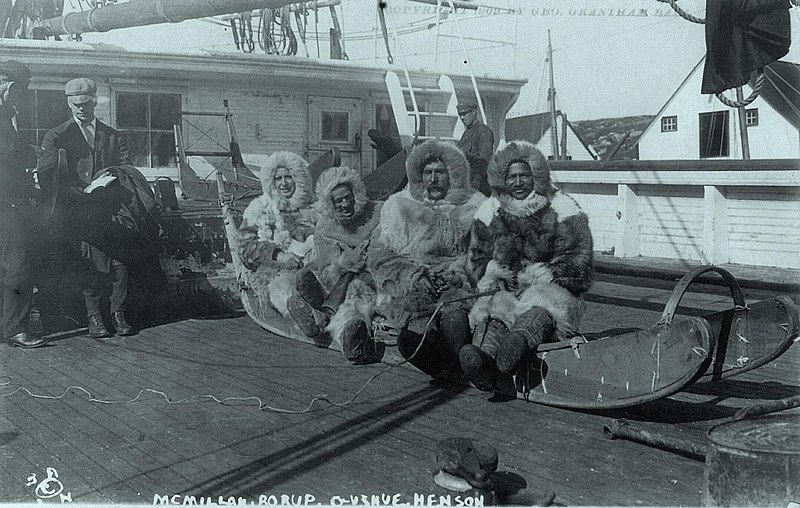
Source: Wikimedia Commons
For example, he knew how to construct shelter out of the snow—igloos—when no other option was available. Likewise, the sleds that carried essential supplies were designed and crafted by Henson—all by hand. It seemed as though he could immerse himself into his environment effortlessly.
The Man They Called “Mahri-Pahluk”
Matthew Henson’s greatest contribution during the historic Arctic expedition was his relationship with the Inuit. After mastering their language, he built a rapport with the locals, earning him the nickname “Mahri-Pahluk,” or “Matthew the Kind One.”
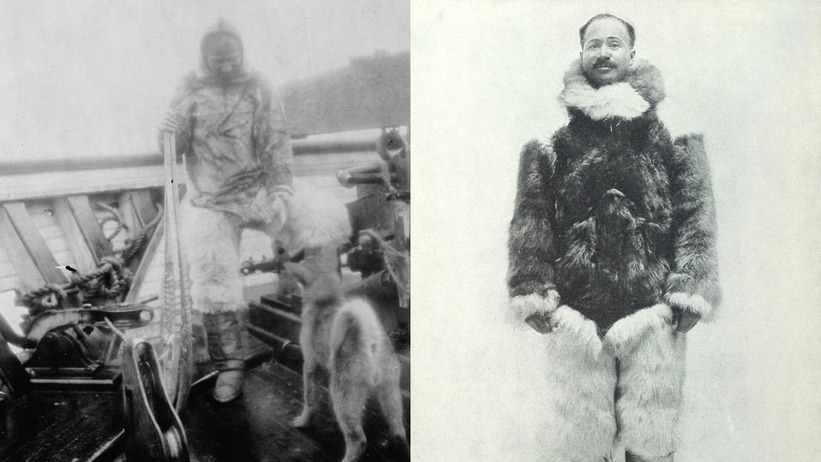
Source: via Picryl | The World's Work/ Wikimedia Commons
With a knack for dog sledding, he became as proficient as the Inuit at navigating the Arctic terrain. He grew to love the Inuit people, and his affinity for their culture and way of life proved instrumental in the expedition’s success.
One Of Many Talents
Henson was rarely left with spare time on his hands. His services were always in demand, and he had a well-honed skill for each task. Carpenterting, tailoring, barbering, interpreting, dog handling, and training—Henson did it all. However, he did spend many of his odd hours amongst the Inuit people.
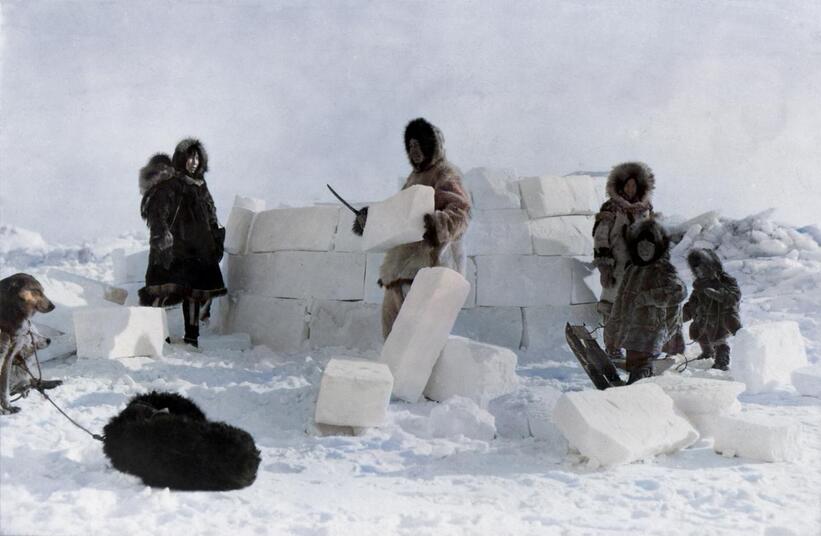
Source: Library of Congress /Wikimedia Commons | {{PD-US}}
He considered them great friends, as they considered him a friend, as well. He became intimately involved in their culture and way of life—so intimate that he fathered a child with a local Inuk woman.
Henson’s Family Tree
Some of Henson’s family still make their lives out in Greenland, though some have since moved away to the United States and Sweden. One of Henson’s relatives has made a name for herself in Hollywood. In fact, she’s a star you have probably seen on the silver screen at least once.
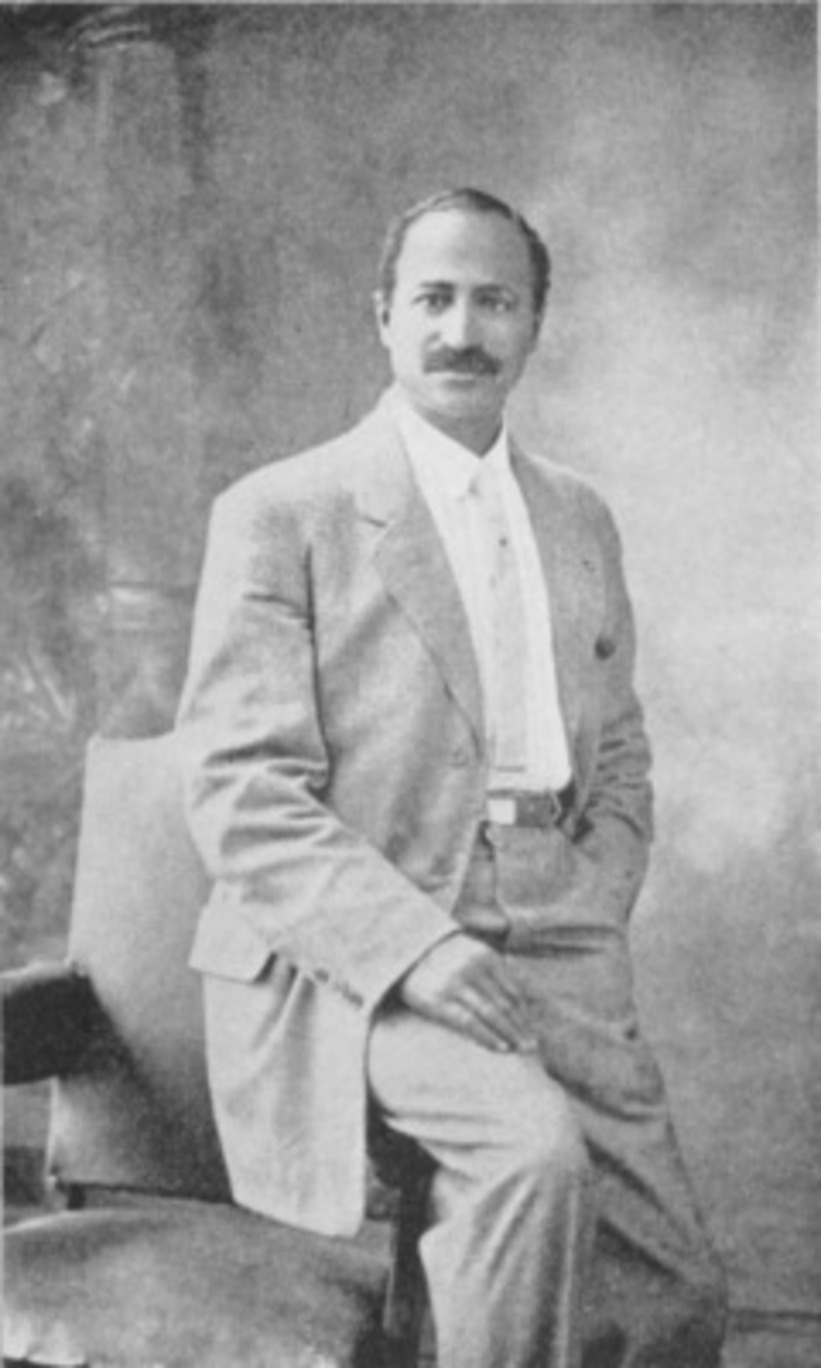
Source: Wikimedia Commons
Despite the geographical and generational distance, Henson’s legacy and impact on Arctic exploration should inspire people across the world. Those who learn about his remarkable life and achievements might wonder why his name isn’t written in the stars.
More Than Just A Fine Companion
Before the 1909 Arctic expedition, Matthew Henson was a lesser-known name in the world of exploration. Despite being Robert Peary’s trusted partner, Henson was hardly recognized for his contributions. However, his value became apparent throughout the mission – and he proved indispensable to the expedition’s success.

Source: Library of Congress/Wikimedia Commons | {{PD-US-expired}}
When it came time to select the six men who would make the final push to the North Pole, Henson was guaranteed a spot. Although Peary overshadowed him in the history books, Henson’s contributions were essential to the mission’s success.
The Long And Final Stretch
After strategically depositing caches of supplies along their intended route, Henson, Peary, and four Inuit team members set out on April 2, 1909, leaving their base camp behind. For five days, they trekked towards the North Pole, driving their dog sleds for up to 14 hours at a time—without taking a break.
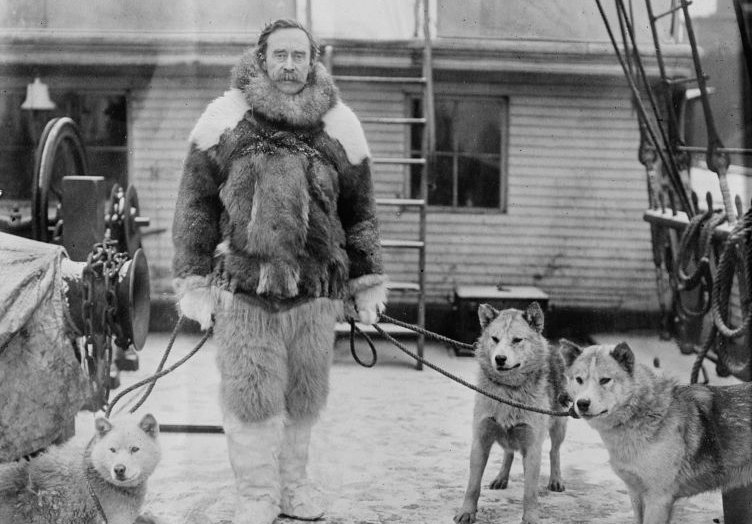
Source: Universal History Archive/Universal Images Group via Getty Images
Finally, on April 6, they reached their destination after traveling over 170 miles. The journey had been arduous, but their determination had paid off. It was a historic moment.
Planting The Flag
As the story goes, after reaching their destination, Peary used the sun’s position to confirm that they had reached the North Pole. The team then unfurled an American flag, taking a photograph to commemorate their achievement. Their return journey would be a grueling one.
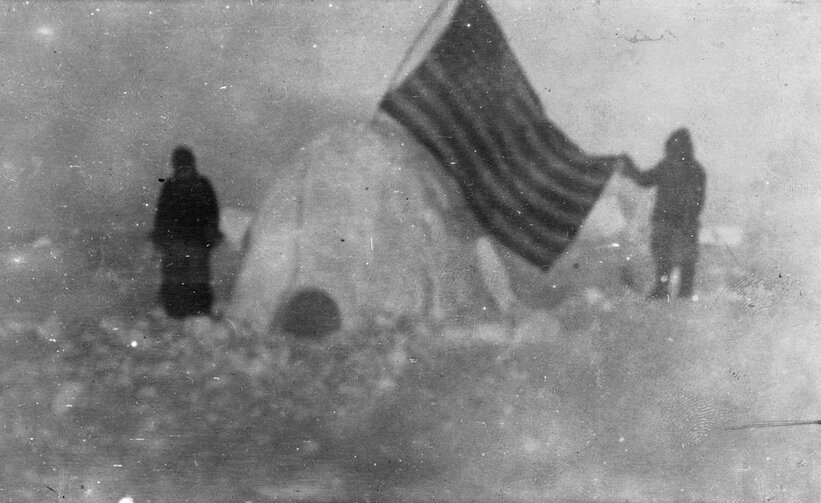
Source: Library of Congress/Wikimedia Commons | {{PD-US-expired}}
Sometime after these events, Henson would give an interview in a newspaper in which he described overshooting the mark by a couple of miles. When he returned, he spotted his own footprints, potentially making him the first person to reach the Pole.
The Way Back Home
Peary or Henson planted the flag, and a photograph was taken. On the return journey, the team traversed over 400 miles in sub-zero temperatures with dwindling supplies. They also faced difficulties with their dogs, who had grown weak and weary from the harsh conditions.

Source: Robert Peary/Wikimedia Commons | {{PD-US}} | Bettmann/Getty Images
Despite these conditions, they managed to make it back to their base camp at Cape Sheridan in May 1909. Peary announced his achievement a few months later in a message to the New York Times. But he wasn’t the only one to make the claim.
Two Claims Days Apart
Peary and Henson were not the only ones vying for the title of the first explorers to reach the top of the world. The American explorer Frederick Cook had set out the previous year, following a route described by Otto Sverdrup—a Norwegian sailor—at the turn of the century.
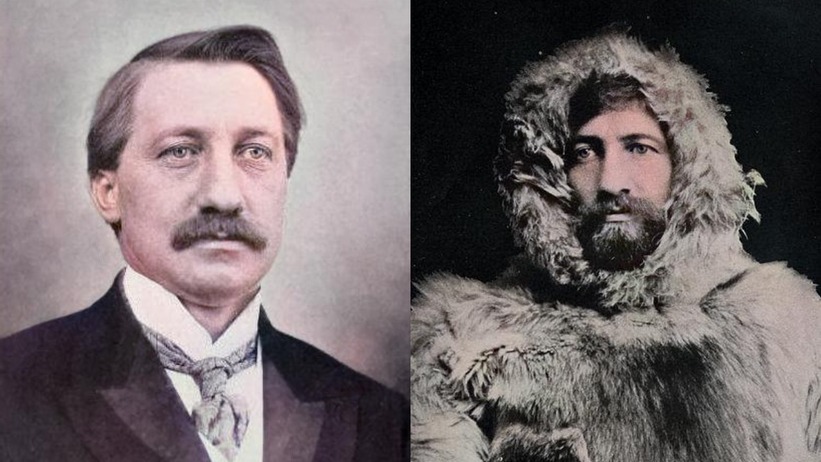
Source: via Wikimedia Commons | {{PD-US-expired}} | Brown Bros/Wikimedia Commons | {{PD-US-expired}}
Cook was also determined to achieve this feat and claimed he had reached the North Pole in April 1908. In September 1909, just days before Peary announced his accomplishment, Cook contacted the New York Herald with his claim.
A Matter Of Controversy
Peary was initially alarmed by Cook’s claim and rushed to make his announcement from a wireless station. The competing claims caused much debate in the press and public. However, Cook first swayed public opinion, returning to New York on September 21 to much fanfare.

Source: Henry Guttmann Collection/Hulton Archive/Getty Images
In contrast, Peary faced skepticism and criticism. Many questioned the accuracy of his navigation and methods, especially after he had previously made claims about the existence of an island in a previous attempt to reach the Pole—claims Cook himself described as false, having traversed the route.
Peary’s Dirty Tactics
On the other hand, Peary had the support and power of the establishment and significant financial resources behind him. He took measures to undermine Cook’s claims, such as preventing a friend of Cook’s from sending the explorer’s instruments back to the U.S.
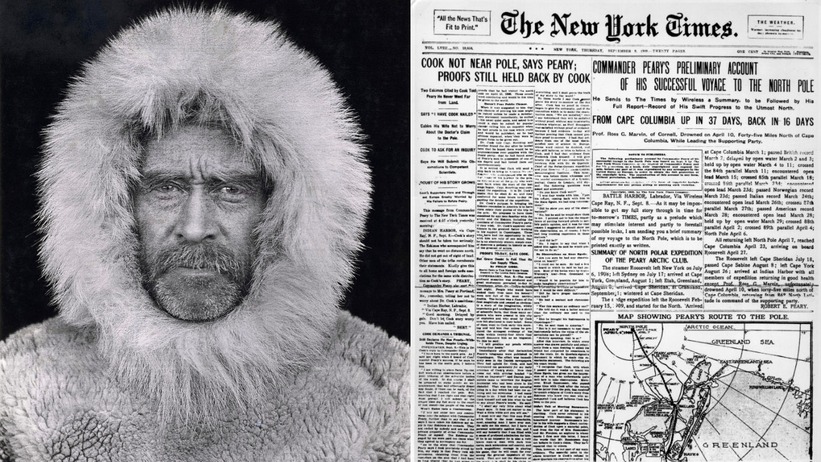
Source: Christie's/Wikimedia Commons | {{PD-US-expired}} | Hulton Archive/Getty Images
Peary also conducted what was effectively a smear campaign against his rival using a barrage of print media attacks against his character and reputation. Eventually, public opinion turned in favor of Peary, and Cook’s claims were largely discredited.
The Question Remains Unanswered
Peary was unquestioningly recognized as the man who discovered the North Pole for many years, while Cook’s claims were dismissed as unproven. But in 1988, a study by the National Geographic Society cast doubts on Peary’s claim of reaching the pole, suggesting that he may have fallen short by as much as 30 to 60 miles.
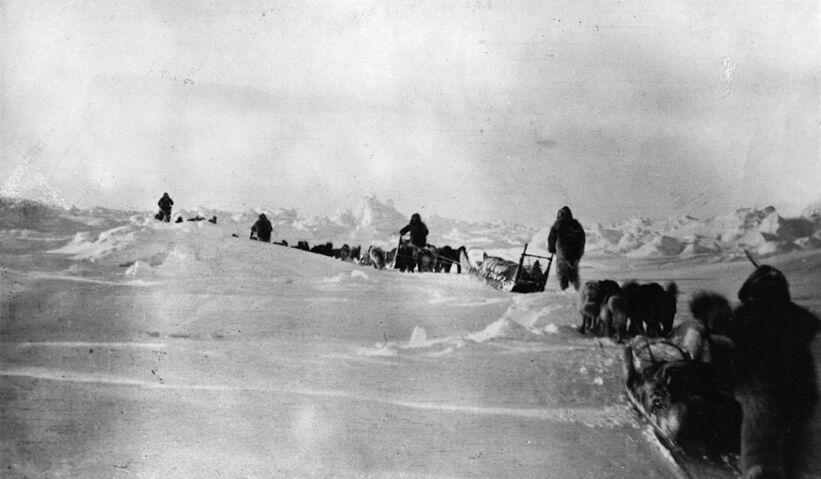
Source: Hulton Archive/Getty Images
This raised questions about the official version of events and led to renewed interest in Cook’s claim. The mystery of who made it to the top first remained a matter of debate.
The Third Man In The Race
While the Peary VS Cook debate still rages on, the lesser-made point that neither might have been the first to make it to the pole still fails to reach many ears. Henson claims to have seen his footprints in the snow after overstepping his target long before Peary arrived.
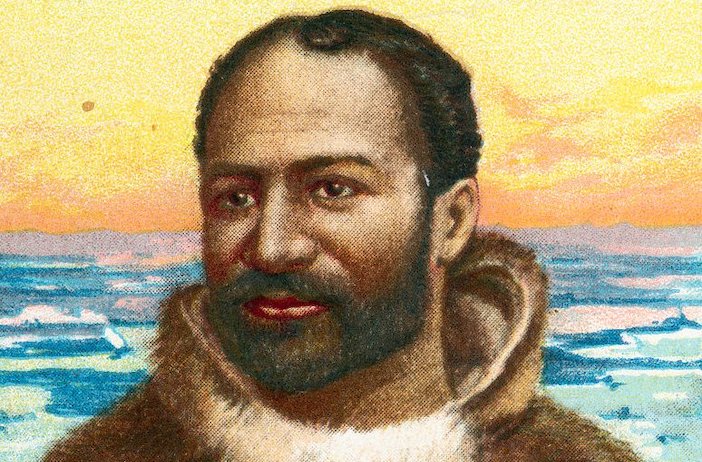
Source: Bettmann/Getty Images
This raises questions about who should take credit—should glory go to the man who claims to have mostly planned the route, being of “acceptable” skin color—or should the bragging rights go to the man who actually crossed the finish line first?
To Whom Does The Glory Go?
Of course, Peary had made great contributions to the venture. He raised the capital needed and was, in his own right, a great explorer. But hours before they arrived at the pole, Peary could not go on—bound to a dog sled while Henson scouted ahead.
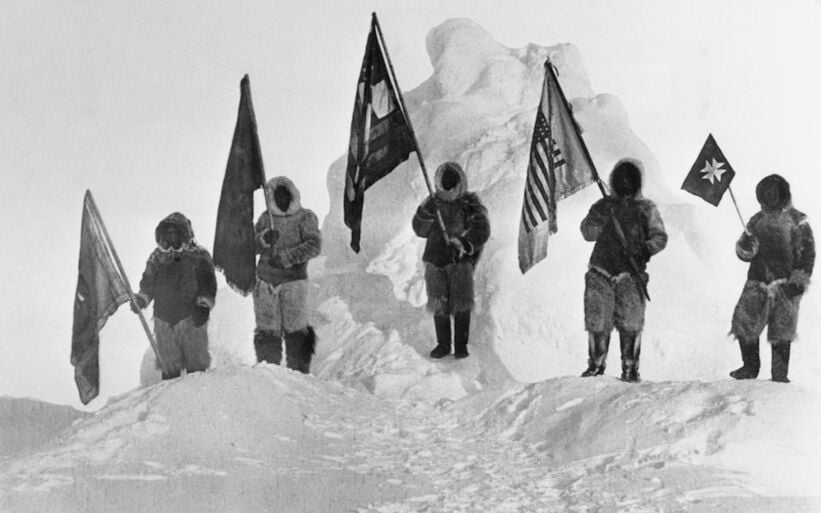
Source: Hulton Archive/Getty Images
Henson had made the environment a part of himself just as he had ingratiated himself with the local people of the land. He mustered the strength to go on. Whatever the case, long after the fact, the lion’s share of glory went to Peary.
The Fallout From Their Success
Following their successful attempt at making it to the North Pole, Henson, and Peary’s friendship began falling apart. Perhaps, Henson stood as a living reminder that he had, at most, come second in the race—and deep down, all the accolades he imagined enjoying upon his return rang hollow.
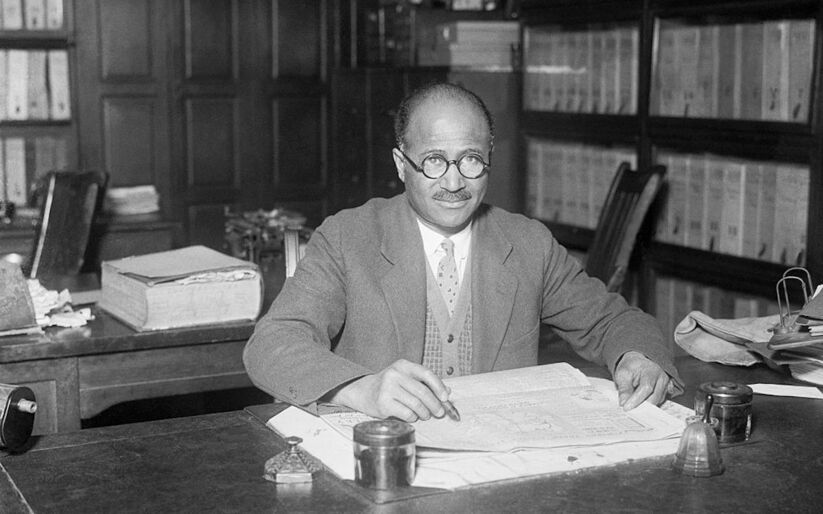
Source: Bettmann/Getty Images
As a Black man in a time of rampant racism and segregation, Henson faced significant barriers to recognition and respect. Even Peary, who owed much of his success to Henson, began to view him as little more than a servant.
Recognition For The Achievement
Peary’s final resting place in Arlington National Cemetery is marked by a monumental grave. Henson, meanwhile, was originally buried in a spot in Woodlawn Cemetery under an unremarkable monument. In 1988, he received the “honor” of being reinterred with his wife next to Peary’s in Arlington.
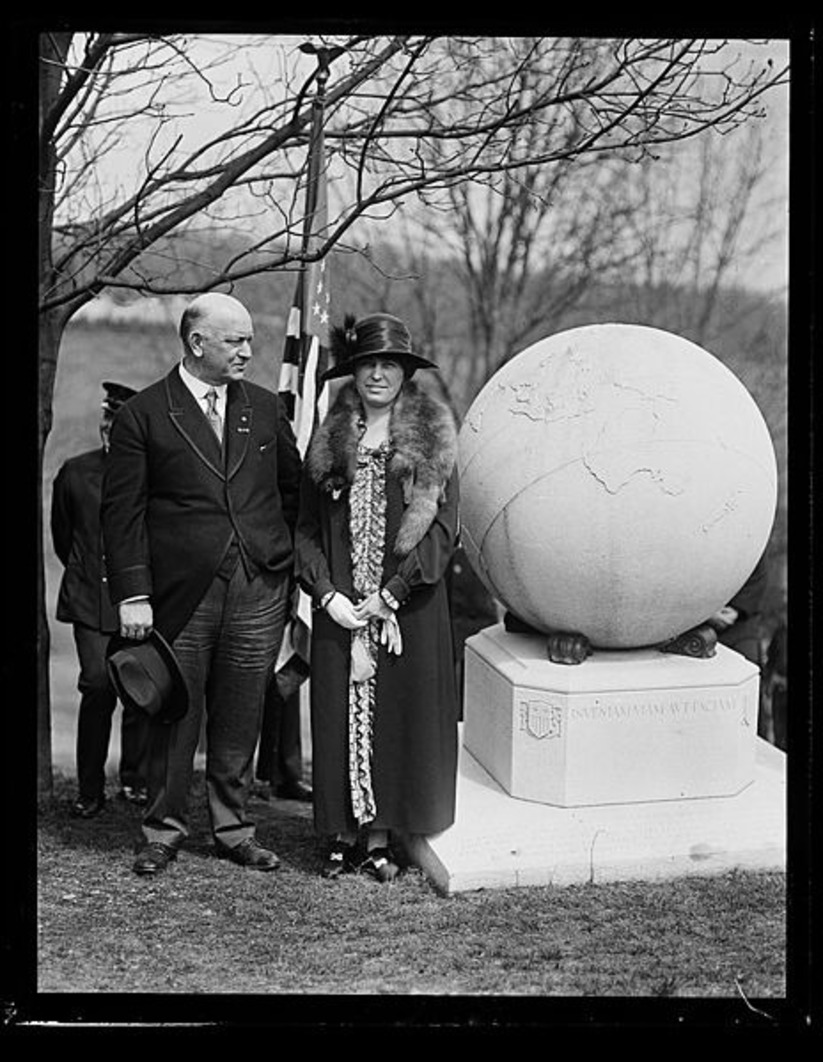
Source: Wikimedia Commons
These are just a few examples where Henson was treated as a mere servant. But people have begun to recognize Henson for his efforts—most proudly of all by his surviving family, including the children and grandchildren of Anauakaq and one famous Hollywood celebrity.
Hollywood Star Taraji P. Henson
Taraji P. Henson—an American singer and actor—can trace her ancestry to the same Inuit guide. While Henson’s life of Hollywood glamor and fame seems far removed from the Arctic exploration of her ancestor, they are very much linked.
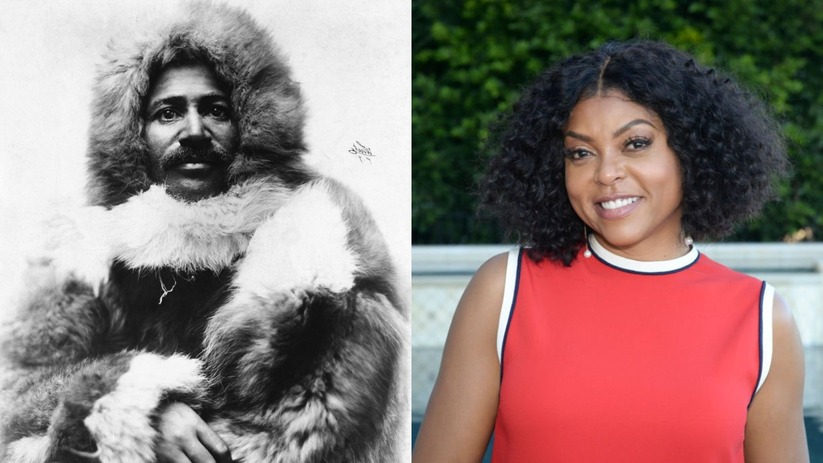
Source: Bettmann/Getty Images | Vivien Killilea/Getty Images for The Boris Lawrence Henson Foundation
Taraji has credited Matthew Henson’s persistence in the face of adversity as an inspiration in her life. She has also used her platform to raise awareness of Henson’s contributions to Arctic exploration and to advocate for greater recognition of his achievements.
The Henson Family Tree And Its Long Roots
Where does Taraji P. Henson fall on the family line? The actress said that her great-great-uncle was the great Arctic explorer’s cousin. “He was the brother of my great-great-grandfather,” she said. This makes Taraji Matthew Henson’s great-great-grandniece.
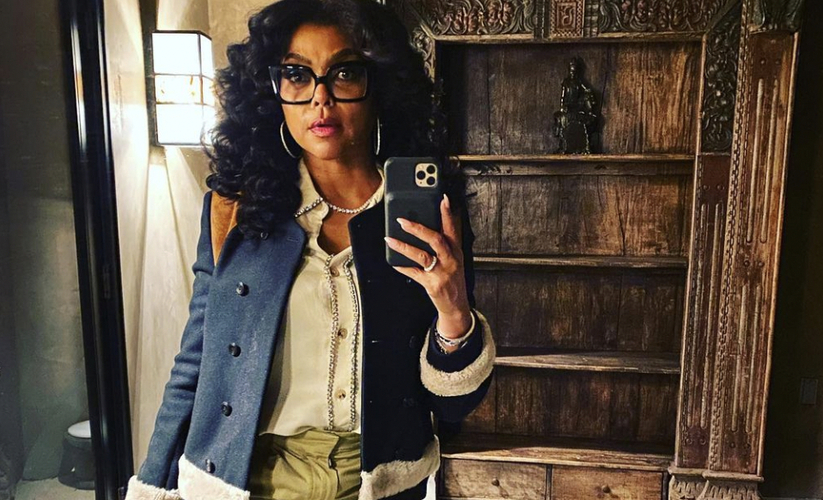
Source: Taraji P Henson/Instagram
Matthew would send him letters about his travels while out on his expeditions,” she recalled in the African American Literature Bookclub interview. These correspondences would have been fascinating artifacts and could have been an invaluable source of historical data—but unfortunately, none of these letters have survived.
Henson’s Lost Letters
It’s possible that there are still undiscovered letters from Peary out there somewhere. According to Taraji, “Somebody in the family had all this great correspondence until one day when their apartment was robbed.”

Source: Saisha Beecham/Instagram
She continued, “The letters were lost, probably thrown away like trash.” This suggests that there may be a trove of important documents out there waiting to be discovered, which could shed new light on Peary’s life and expeditions. It’s a tantalizing prospect, but these documents are unlikely ever to see the light of day.
Tracing Her Heritage Back
Taraji P. Henson’s ancestry is not limited to her connection to the legendary explorer of the North Pole region. Like many African Americans, Taraji’s family history blends different cultures and traditions shaped by centuries of migration and struggle.
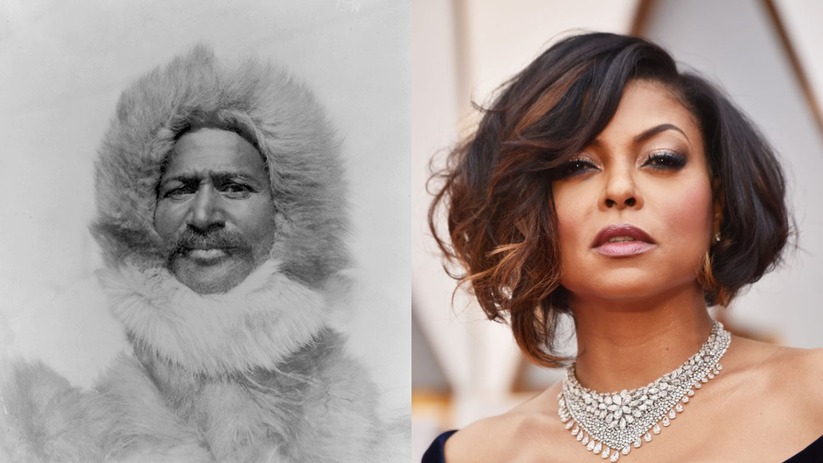
Source: Apic/Getty Images | Frazer Harrison/Getty Images
Taraji can trace her roots to the small town of Nanjemoy, Maryland. However, the Hidden Figures actress was actually born in Washington, D.C., approximately 40 miles north. Her first name, Taraji, originates from Swahili and means “hope,” while her middle name, Penda, translates to “love.”
The Opportunity To Inspire Others
In a 2012 video uploaded to YouTube by the Africa Channel, it was revealed that Taraji P. Henson is also descended from the Masa people of Cameroon through her mother’s lineage. Her ancestry is undoubtedly diverse, but Henson has always been determined to carve her own path in life using her talent and grit.

Source: Cieon Movies/YouTube
With her ongoing commitment to social justice causes, including social equality, education, and animal protection, Henson continues to inspire others to make a positive impact in the world.
A Love Of Acting And Numbers
Taraji P. Henson is known for her amazing acting skills, but she also has a talent for math. She originally wanted to be a mathematician and even attended North Carolina A&T State University on a full scholarship to study electrical engineering.
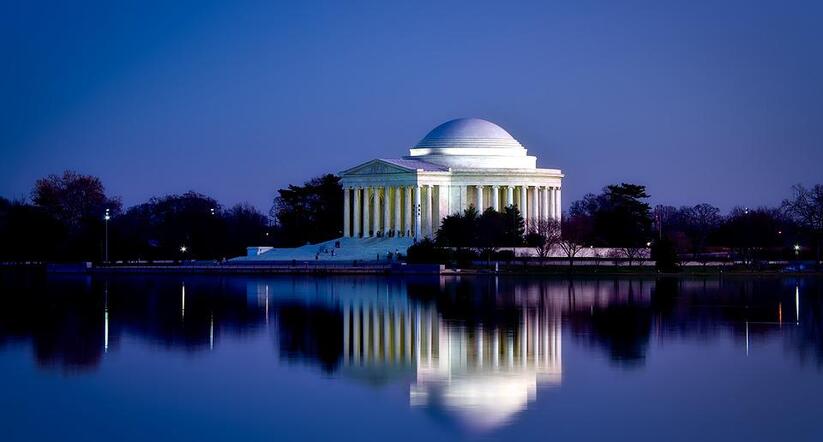
Source: 12019/Pixabay
However, she ended up changing her major to acting and theater at Howard University, and the rest is history. She did play Katherine Goble Johnson, a famous African American mathematician, in Hidden Figures, perhaps as a direct result of her passion for numbers.
Making A Name For Herself
Taraji P. Henson began her career as a background performer while working as a secretary for the Pentagon. She also worked as a singer-dancer-waitress on a dinner cruise ship in the evenings. She made a breakthrough with her role as Yvette in the 2001 film Baby Boy.
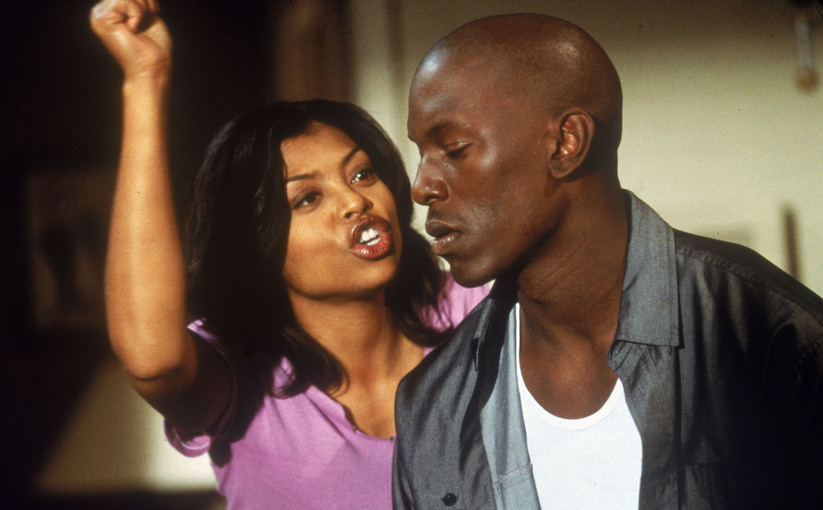
Source: Courtesy Columbia Pictures/Getty Images
From then on, she continued to make waves in Hollywood, much like her great-great-grand-uncle did when he became one of the first people to reach the North Pole. Thankfully this time, she’s getting the recognition she deserves in her lifetime.
Winning The Accolades She Deserves
Throughout her career, Taraji P. Henson has garnered numerous awards and accolades for her acting skills. Among her achievements are a Golden Globe and a Screen Actors Guild Award. She was also the first woman of color to receive the Critics’ Choice Television Award for Best Actress.

Source: Kevin Winter/Getty Images
She has been nominated for an Academy Award and three Primetime Emmy Awards, solidifying her reputation as a talented and versatile actress in Hollywood. Her dedication to her craft has undoubtedly contributed to her success and recognition in the entertainment industry.
Her Best-Known Role
Her performance as the NASA mathematician Katherine Johnson in the critically acclaimed film Hidden Figures (2016) garnered widespread recognition and praise. In addition to winning a Screen Actors Guild Award and receiving nominations for an Academy Award and a Golden Globe, Henson was named one of Time magazine’s 100 most influential people in 2016.
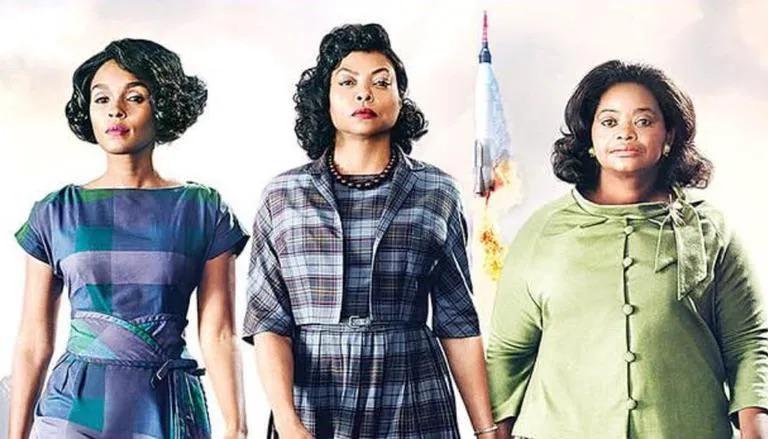
Source: ThyKrusadR/Reddit
Despite following a different path from her ancestor, Taraji has undoubtedly made a significant impact in the entertainment industry—but like Matthew, she got there with persistence and smarts—her achievements are a testament to that.
Living A Quiet Life After Leaving A World Of Adventure
After returning from the North Pole, Henson reportedly settled into a relatively quiet life and took a job at the custom house in New York City at the suggestion of President Roosevelt. While Henson did not achieve the same level of fame and recognition as Peary, he remained a respected member of the African American community and an inspiration to generations of adventurers and explorers.
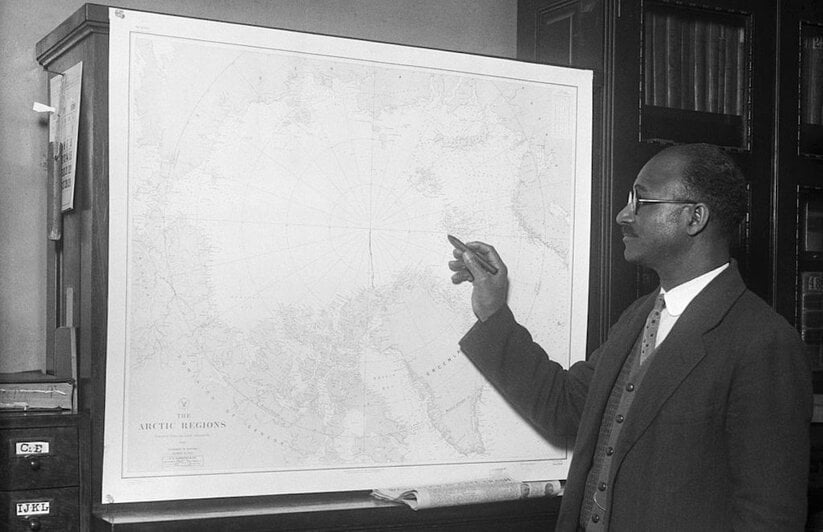
Source: Bettmann/Getty Images
Despite their differences, Peary and Henson maintained a somewhat cordial relationship in their later years, and Henson even served as a pallbearer at Peary’s funeral.
Finally Ingratiated Into The Annals Of History
After returning from the North Pole, Henson lived a relatively quiet life, working at the New York City customs house with the help of a recommendation from President Taft. It wasn’t until 1937, at 72, that he received any recognition for his achievements.
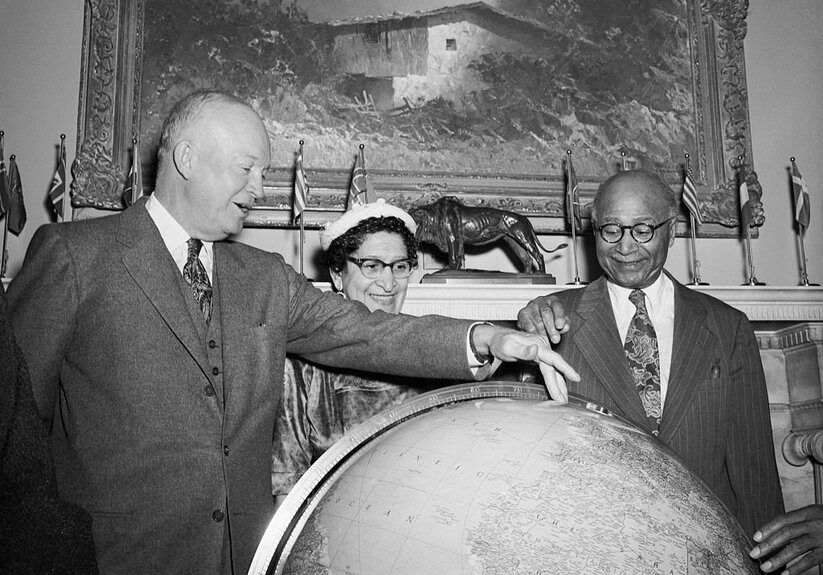
Source: Alamy
The Explorers Club made him an honorary member, and in 1944 he was given a duplicate of the silver medal awarded to Peary. A decade later, in 1954, President Eisenhower invited him to the White House, giving him a special commendation for his contributions to Arctic exploration.
Exploring The Undiscovered Country Once Again
Besides the fact that Henson acted as a pallbearer for Peary’s funeral, it is unclear whether Henson and Peary ever reconciled before Peary’s death in 1920. However, they were ultimately reunited in death. Henson was initially buried at Woodlawn Cemetery in New York City but was reinterred with honors at Arlington National Cemetery in 1988.
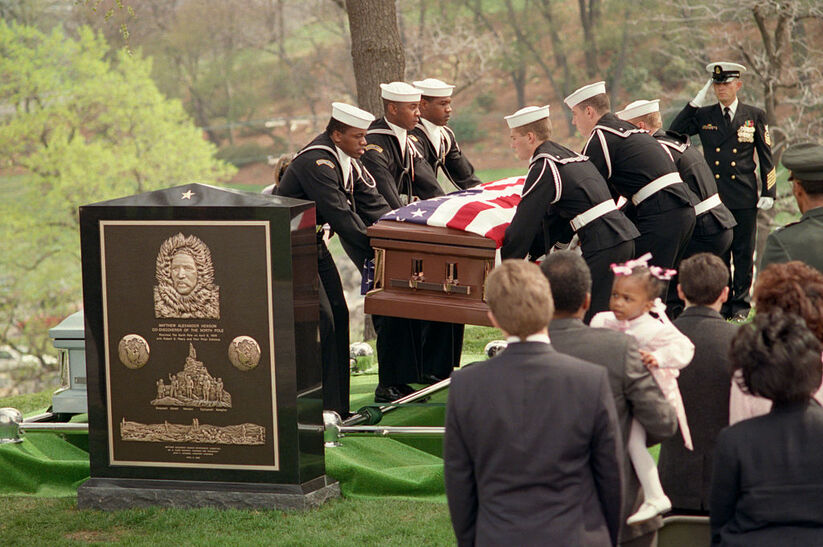
Source: Bettmann/Getty Images
Now, his grave lies close to that of Peary. Whatever the truth of that historic expedition on the snow and whatever was spoken between the two men after the expedition, their legacies are forever linked.
More Than A Genetic Link
Taraji P. Henson has always been vocal about her admiration and respect for her great-great-grand-uncle Matthew Henson. Speaking to the African American Literature Book Club, the actress credited her ancestor’s spirit for inspiring her to achieve success.
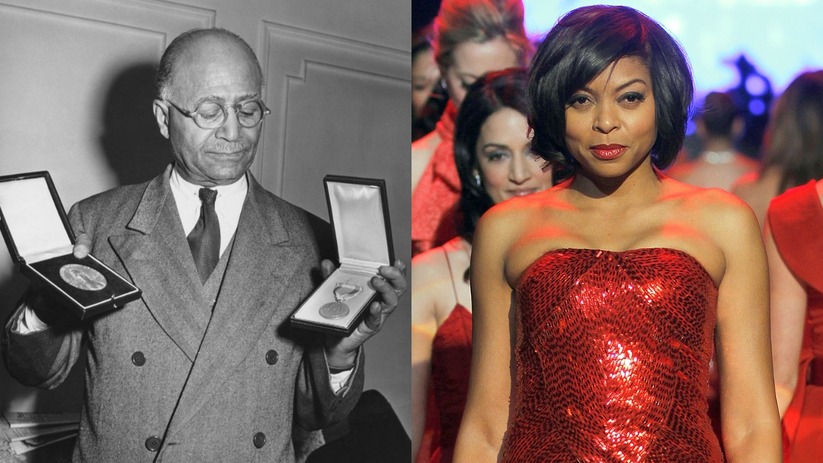
Source: Keystone/Hulton Archive/Getty Images | The Heart Truth/Flickr | {{PD-USGov}}
Henson says she gets her “survival skills” from Henson and believes that nothing is impossible if she applies herself. She also attributes her never-give-up attitude to Henson’s genes. Through Henson’s legacy, Taraji P. Henson found inspiration to pursue her dreams and make her mark on Hollywood.
